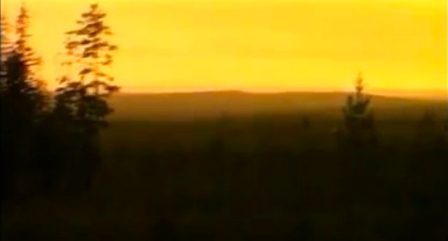SAVVY Contemporary, Berlin, Germany
11 Dec 2016 - 15 Jan 2017

IMMORTALITY FOR ALL is an exhibition that addresses the notion of death as well as concepts of immortality and their forms of management – death as capital and economy, the representation and celebration of death in architectures, sculptures, images. The artworks featured here speak of death not as the end process of life, but as a perpetuation of life through symbols.
IMMORTALITY FOR ALL has been developed as an associative dialogue on death and monumentality between the artists and curators Juan Blanco, Ana María Millán and Esteban Rivera with a selected number of peers, mostly based in Berlin. Their exchange was inspired by SAVVY Contemporary’s location in Wedding´s former crematorium (the first of its kind in Berlin): a protected building, a historical sign of the changing cultural measures around death management in the early XX century.
IMMORTALITY FOR ALL marks the first in the laboratory format OBSERVATORIUM LABORATORIUM, in which emerging curators or artists propose exhibitions inspired by SAVVY Contemporary‘s concepts and visions, as well as its forms of sociopolitical reflections and speech.
With Tom Bogaert, Juan Blanco, Jan-Peter Gieseking, Kinga Kielczynska, Kristof Trakal, Ana María Millán, Paula Niño, Lydia Paasche, Esteban Rivera, Rizki Resa Utama.
Curatorial statement
In 2015, Diego Alejandro Botero López, a young Colombian student, was diagnosed with osteosarcoma in his left leg. After the doctors had cut off his leg, he went to court to claim the right to keep his amputated member and avoid its incineration. His plan was to be buried together with this leg after his death. He won the cause, but unfortunately the leg was already incinerated. This story is just one of plenty examples of how taking care of a body or a part of it has political, social and cultural implications, how it involves the State and the law.
Meanwhile, the funerary industry continues to expand in different directions, towards new and imaginative ways of profiting from death. Bios Urn for instance, is a „biodegradable urn, that takes your ashes and turns them into a tree.“ It is is one of the many companies that promise a new kind of bio-reintegration of a corpse in the environment. For $145 you can even decide what tree you will become out of 6 available on their website. Biodegradable processes, cryonics, embalming, or any other procedure that promises a way out of death via a compensatory eternal life, are not just ideological projects, they are also business ideas.
IMMORTALITY FOR ALL is an exhibition and temporal lab-space that encourages us to reflect about death and immortality from multiple artistic perspectives: what does it mean to be denied the right to decide over our own death? How can we, should we, will we determine the future of our own bodies? The artists will reflect on the notion of preservation, and look at monuments as a patriarchal way of deciding what is worth to be remembered. IMMORTALITY FOR ALL is an opportunity to invent new ways to look at death and to gather artists whose works stand as forms of empowerment to our right to perform, visualize or materialize death.
Sun Ra’s legendary visit to Egypt and the Pyramids of Giza in 1971 is addressed in “Pepsi, cola, water?” (2015) a short experimental documentary by Tom Bogaert. Here, the multicoloured lights game played against the facade of the pyramids and the sphinx since 1961 is put in relation to the music of Sun Ra and archive footage of his visit to Egypt. “Die Versteinerten” (2015) by Esteban Rivera is a film where an interview with David Stodolsky, a member of the Cryonics Institute, guides us through Walter Gropius’ former house in Dessau which was renovated by Bruno Fioretti Marquez Architects. The reflection on this building-monument becomes a metaphor for what is fossilized, where Modernism is in a fossil state, and survives as a trace of what once was. Paula Niño moves from buildings to the human scale, brutally reminding us of the spatial relation our bodies have with architecture. “Reecuentro” (2012-2015) is a series of minimal cement sculptures that present pillows of people that died alone in their homes in Germany.
The works of Juan Blanco and Jan-Peter Gieseking address the relationship between the mind and the body in a technologically accelerated society. In their works captchas and digital interfaces are pretexts to question human existence in the digital age, and what parameters are used to define what is real.
The Occult Acting Group (OAG) of Kristof Trakal is a research endeavor of acting techniques as a means of resistance. His video-installation and lecture-performance “Theme Park of Death” (2016) proposes performative ways of inhabiting a cemetery. Its possible inhabitants appear as ghostly bodies in the images of Kinga Kielczynska who reminds us of early photographic experiments through a new age iconography in “Digital Enlightenments” (2013).
“Hielo Negro” (Black Ice) (2015) by Ana María Millán is a video in which images of Black Metal in two different countries are juxtaposed and associated, those of the Norwegian and Colombian scene. The artist underlines the artificiality implied in the concepts of death and nature, while Lydia Paasche and Rizki Resa Utama instead reflect and offer new visions on the concept of the body. Bodies or their absences are depicted as a reflection on narcissism, considered as a consequence of hypercapitalism.
.
Opening: December 10, 2016 | 7pm
Lecture performance by Kristof Trakal: December 16, 2016
Free entry: Donations welcome
.